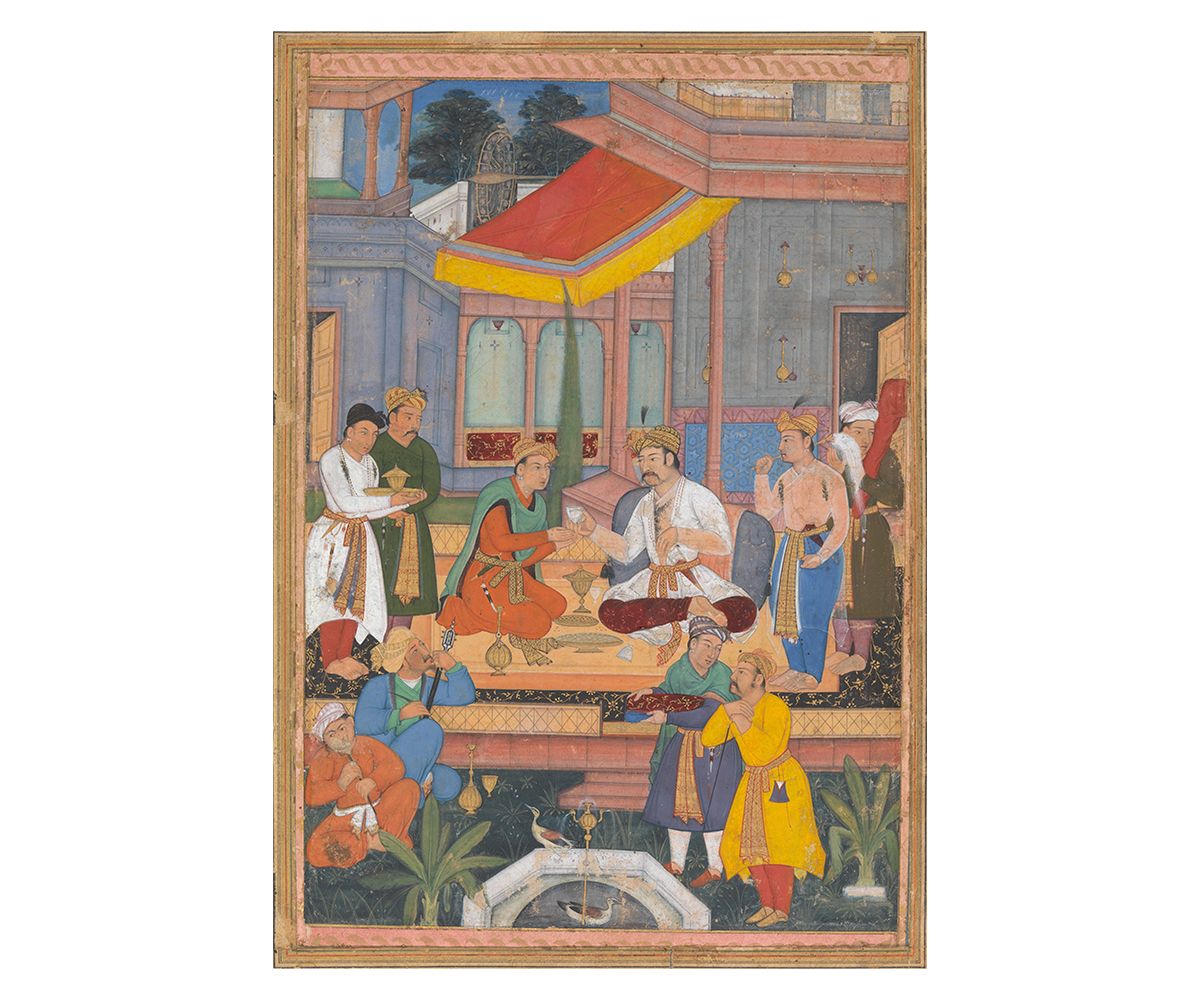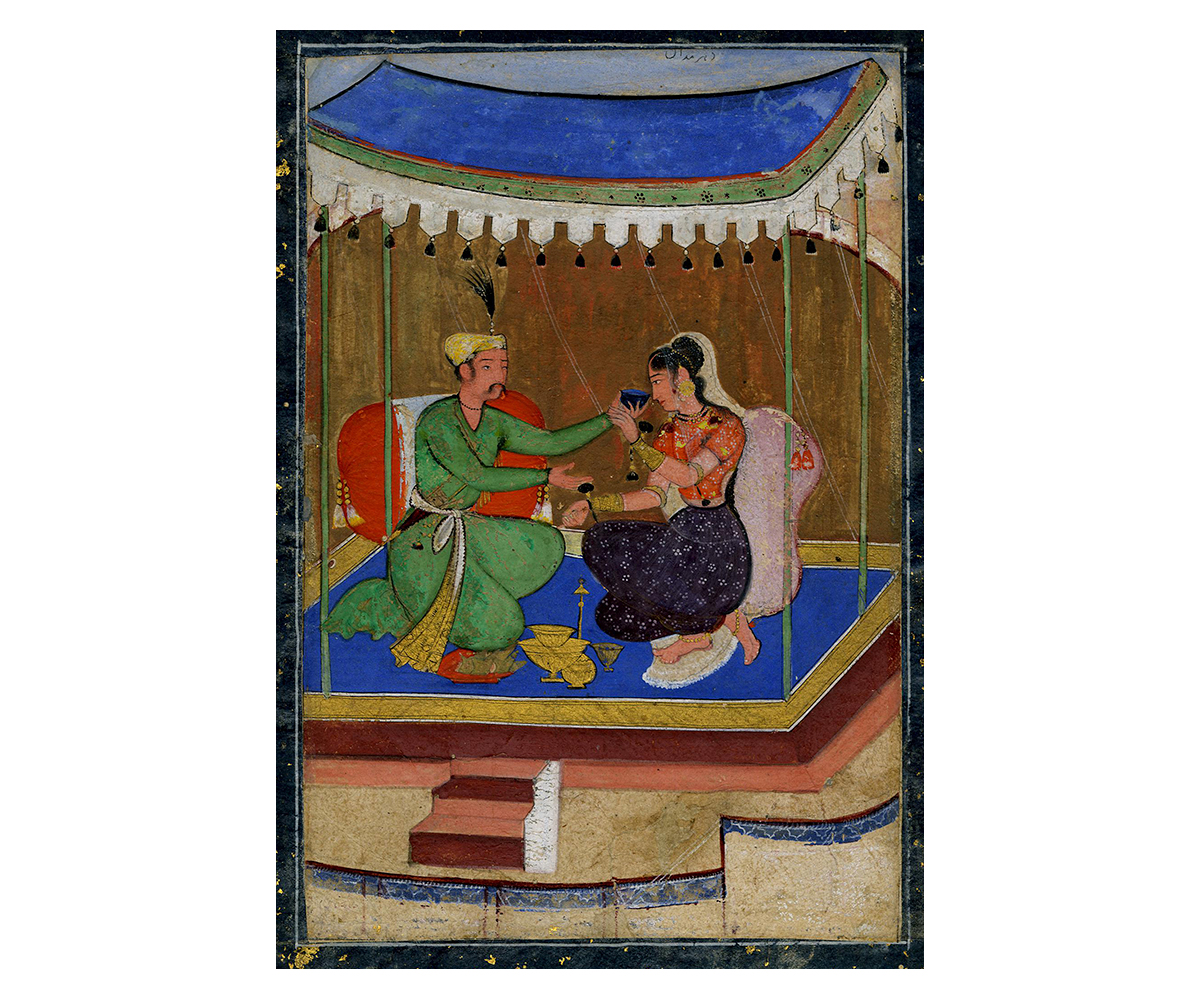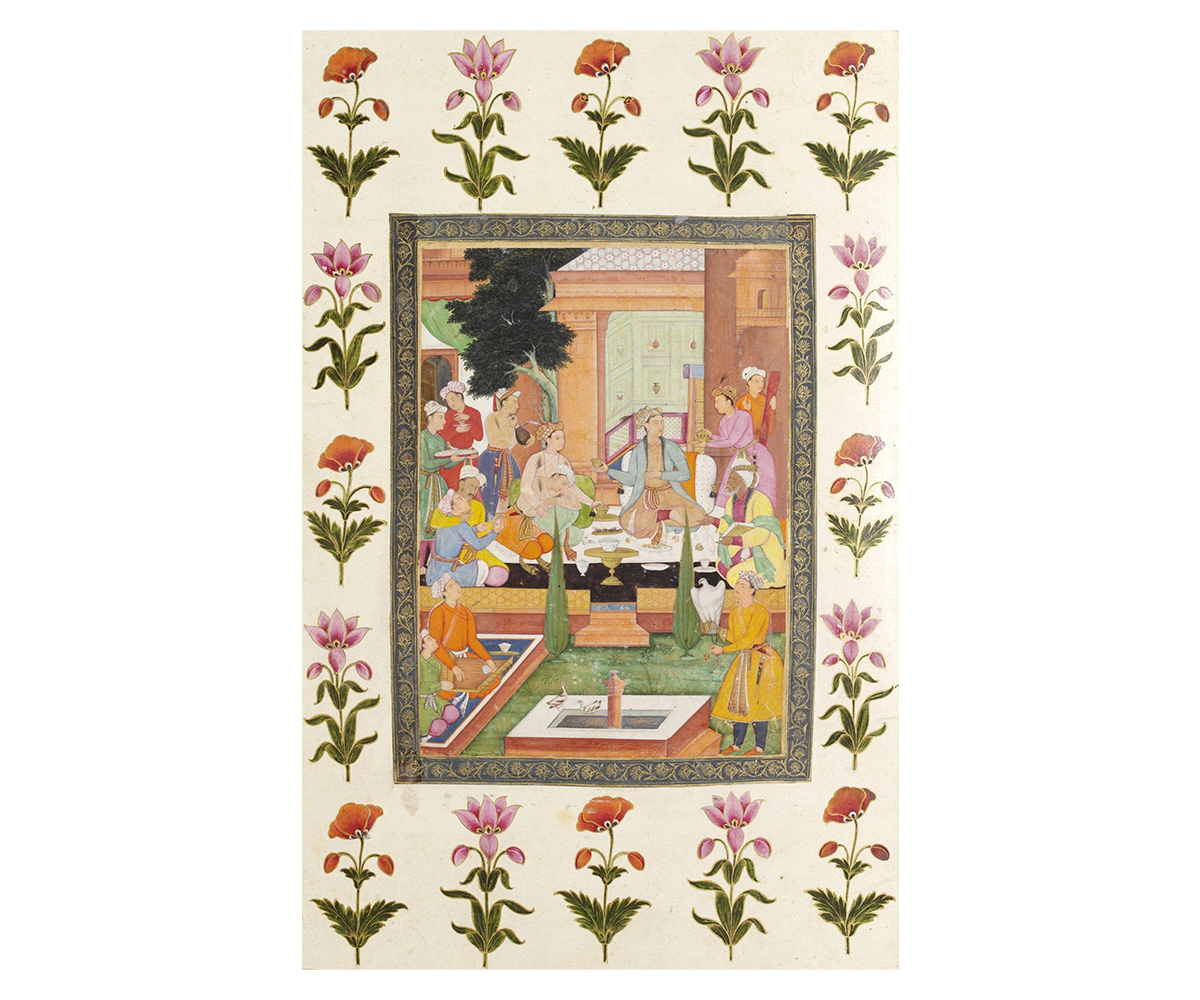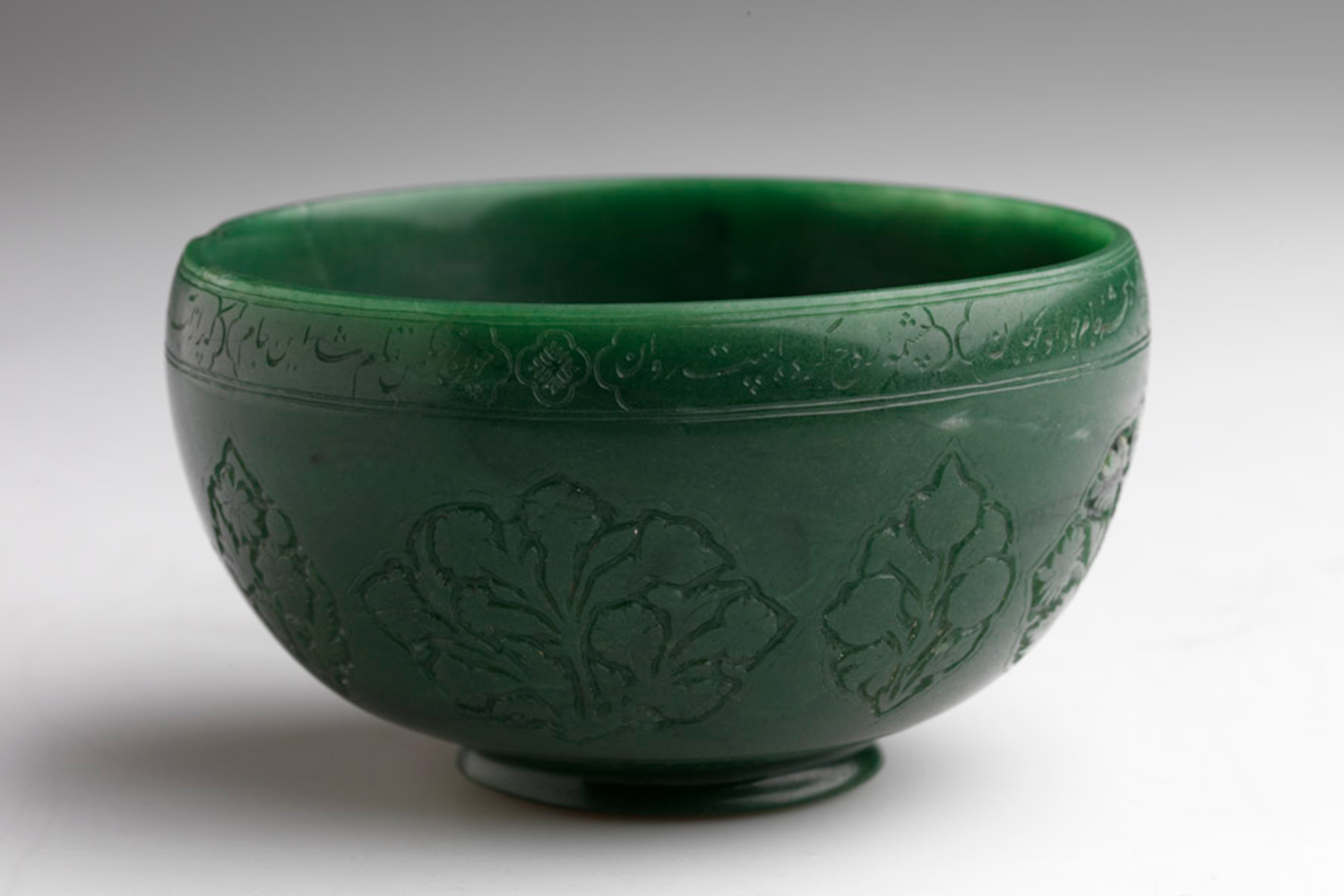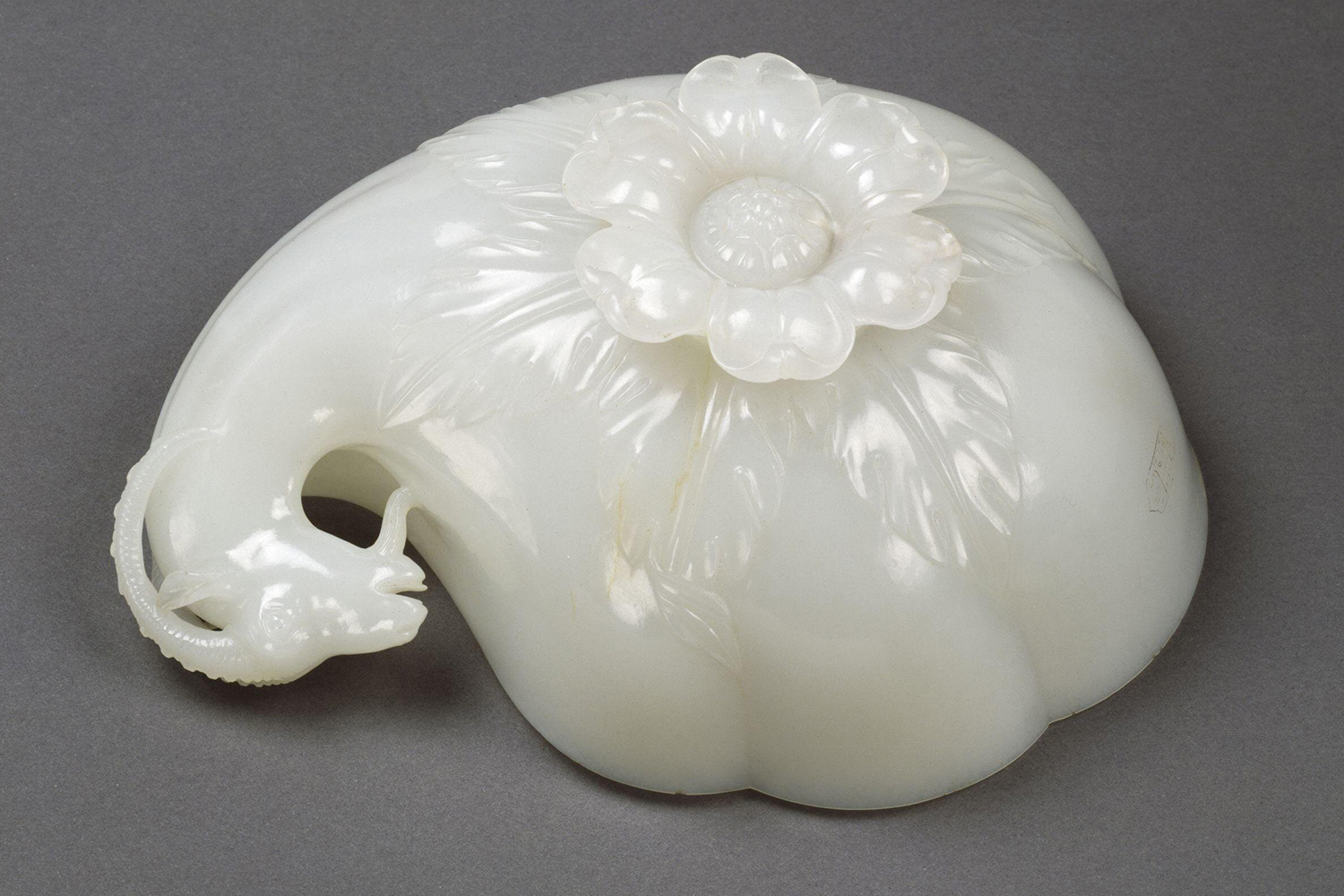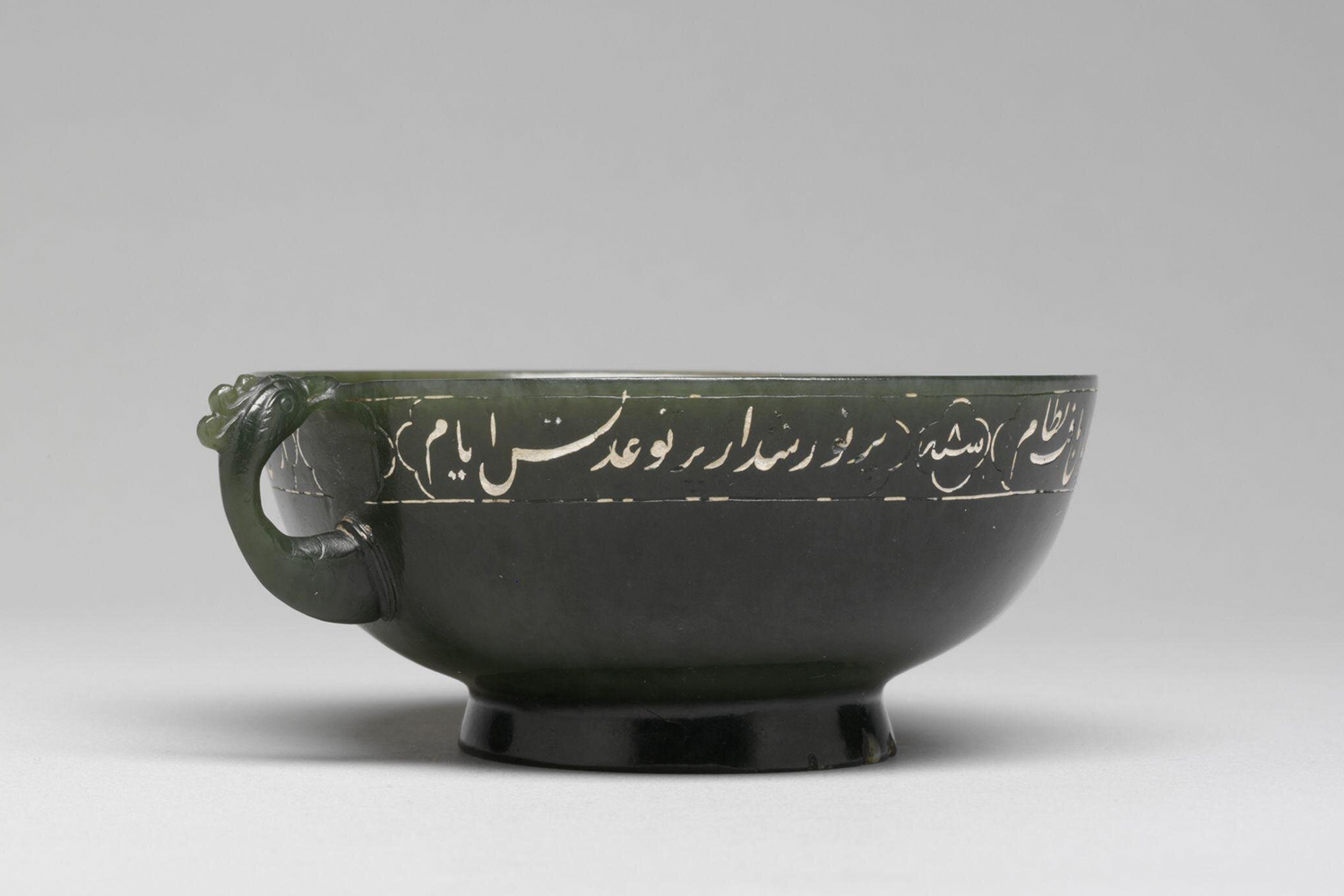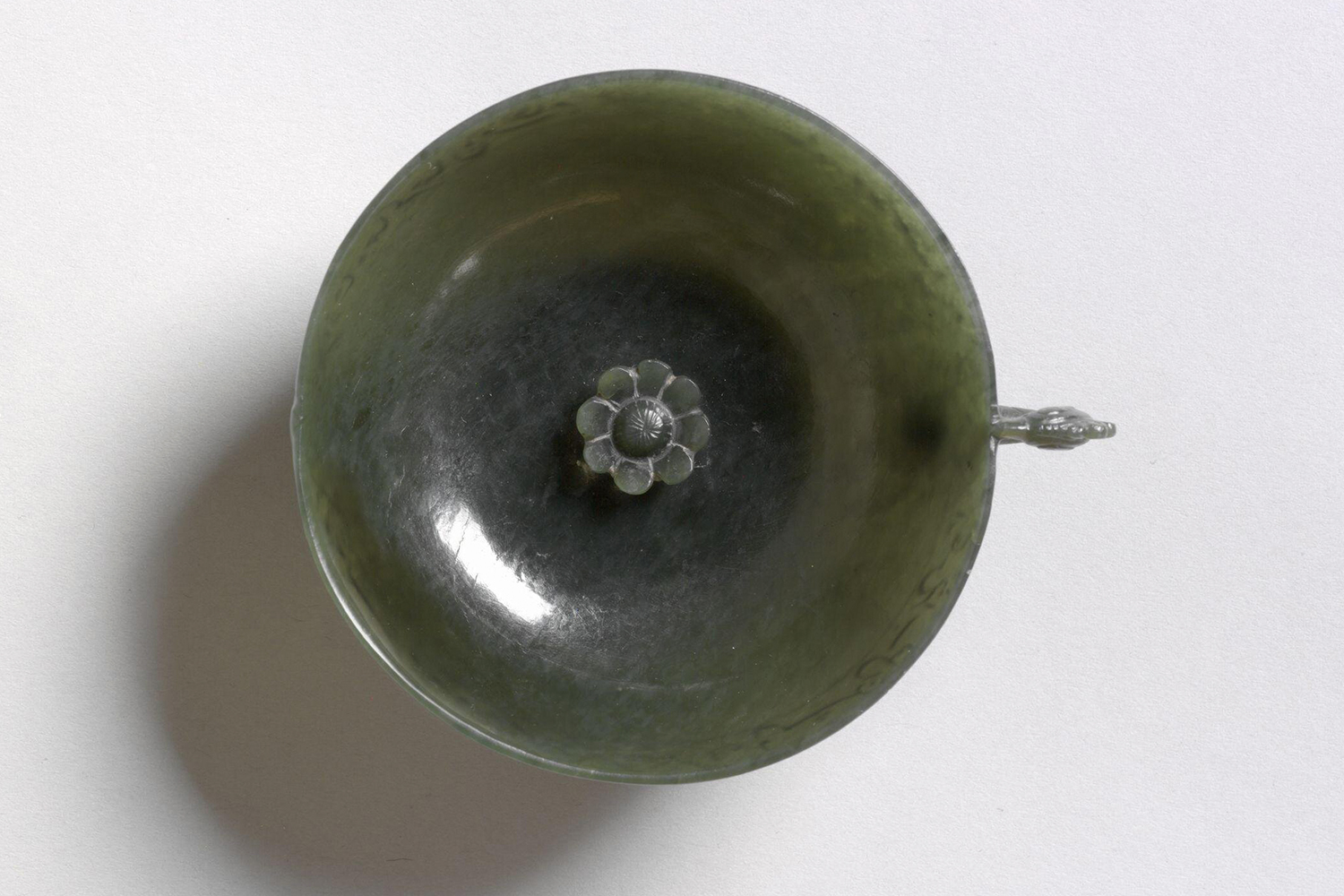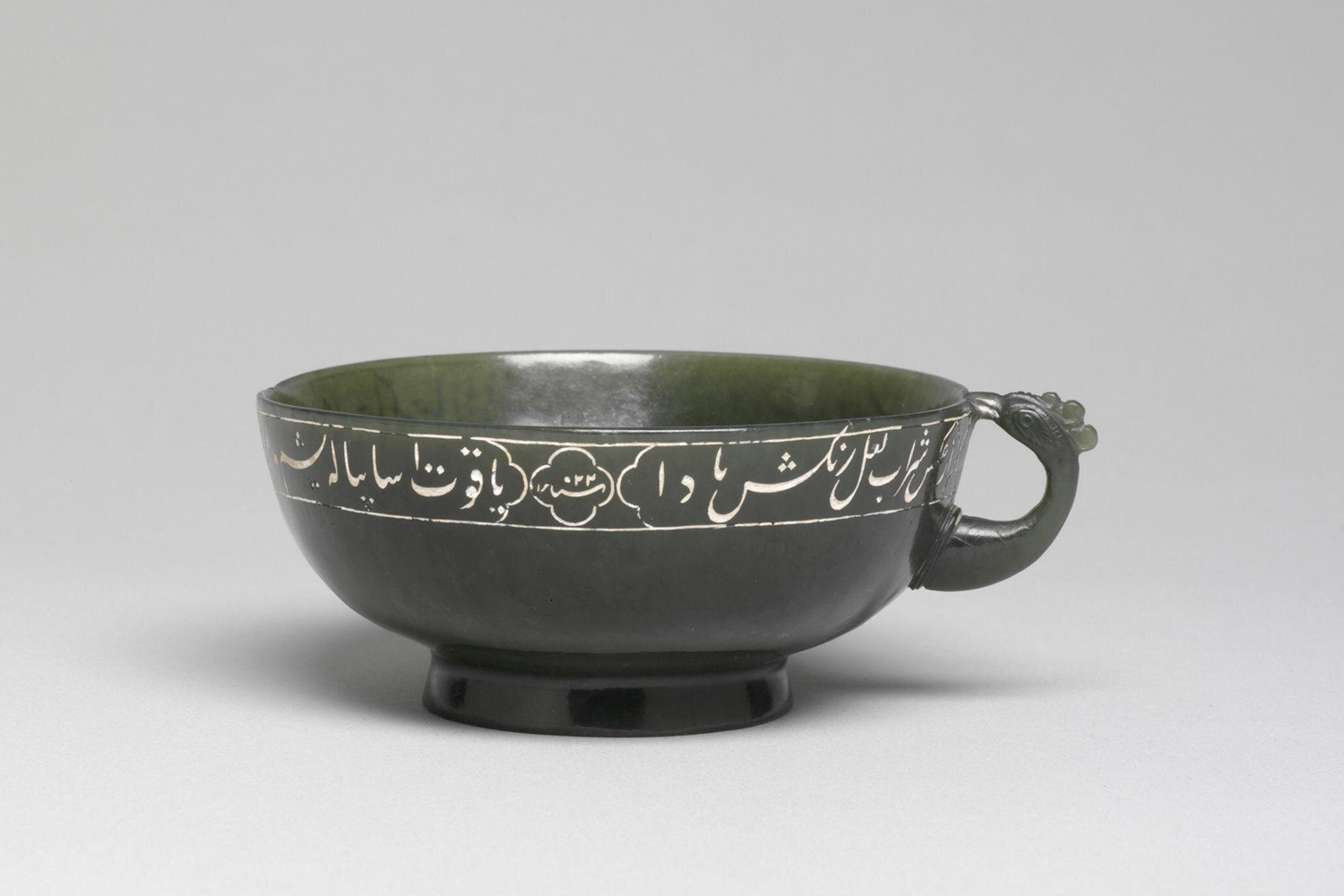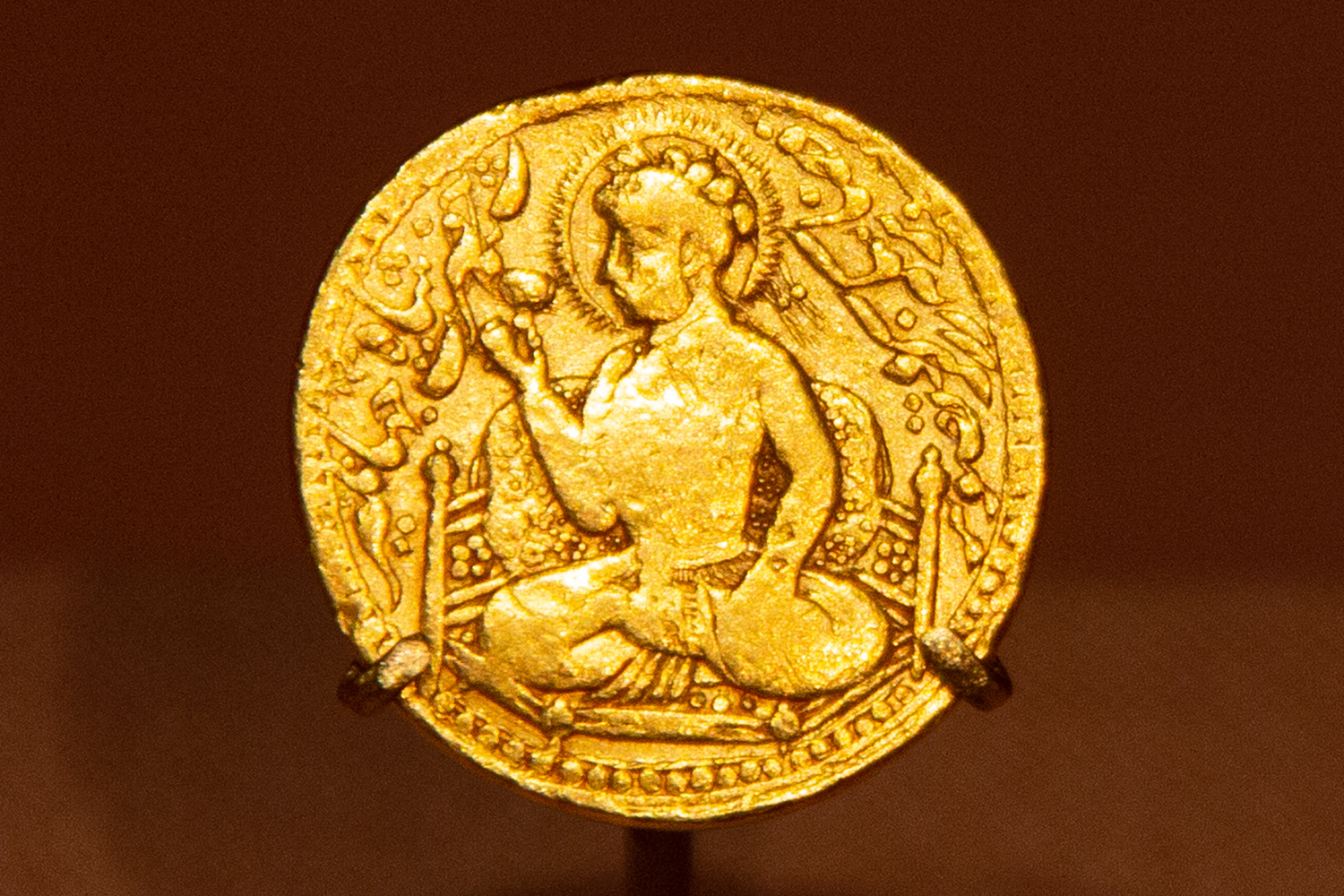ARTICLE
Mughal Wine Cups
Although prohibited by the injunctions of the Quran and other juridical and religious Islamic texts, wine-drinking and the patronage of finely crafted wine cups was an important part of the courtly cultures of Mughal and other pre-modern Muslim societies. Most rulers of the Mughal dynasty (1526–1858) have been recorded in visual sources as participating in royal feasts and garden parties with a gold, silver or jade wine cup in their hands. Praise of wine also permeates Persian and Sufi literary traditions — which heavily influenced Mughal courtly culture — where it goes beyond the domain of pleasure to represent the ecstasy for love and union with God. This abundance of wine-related imagery in Mughal visual and literary culture, along with the ornamentation of wine cups belonging to Mughal emperors, points to the symbolic significance of the wine cup motif, which often went beyond the object’s utilitarian function, in Mughal South Asia.
The wine cup appeared not only in paintings depicting royal fetes and parties but also in those which showed the emperor and princes visiting saints and ascetics. Wine cups even appear in Mughal emperor Jahangir’s coins and jharoka portraits — formal square or rectangular portraits which show the emperor’s bust framed by a window, representing the darshan, or daily ritual of revealing himself to his subjects — indicating the association of the motif with the legitimacy of his kingship and near-divinity. Scholars suggest that this is probably because the wine cup in Persian literature often alludes to the magical cup of Jamshid, a mythological king from the Shahnama whose reign inaugurated the first golden age in Iranian history, which when filled with wine became a vessel of revelation: allowing him to see all the regions of the world as well as everything that happened there in the past and future.
Patronised particularly by emperors Jahangir and Shah Jahan, Mughal wine cups are ornate objects, often engraved with verses and images and made of precious materials such as gold, emerald and jade, sourced from Khotan and Kashgar in present-day Xinjiang, China. They are usually small in size, ranging from about 3–17 centimetres in height and 3–35 centimetres in width. Of these, the jade wine cups — preferred by emperor Jahangir who is rumoured to have owned 500 of them — make for especially interesting examples. They display unusual forms, such as those of gourds and plum blossoms, and range in colour from glassy whites to light and dark greens. Moreover, almost all extant examples of Mughal wine cups are inscribed with dates, Persian verses praising wine, names of patrons and their honorifics, or are engraved with floral patterns.
Among the large number of Mughal wine cups housed in the collection of the Victoria and Albert Museum (V&A) in London is a shallow dark green vessel 3.8 centimetres high and 8.8 centimetres wide, made of nephrite jade and dated to 1613. It has a handle shaped like a cockerel’s head and Persian verses, filled in with white pigment, inscribed across its rim. The date of manufacture — 1022 AH, corresponding to Jahangir’s eighth regnal year — is placed inside a quatrefoil motif within the inscription. It also carries a quatrain which roughly translates to “Through the world-conquering Shah, the world found order/ our time became filled with light by the radiance of his justice/ From the reflection of his spinel-coloured wine may/ The jade cup be forever like a ruby.” The verses indicate that the likely maker of this jade wine cup was Sa’ida-ye Gilani, a master craftsman and calligrapher from Iran, who was the zargar bashi (head jeweller) of Jahangir’s court.
Another wine cup in the collection of the V&A Museum, dated to 1657, was probably crafted for emperor Shah Jahan. It is made of white nephrite jade and shaped like a gourd with a ram-head handle. The underside of the cup has a supporting base in the form of a lotus flower flanked radially by extending acanthus leaves. Reflective of the cultural cosmopolitanism that characterised Mughal visual culture, the wine cup combines Indic, Chinese as well as European influences into its visual language. The ram-head handle and the lotus base are clearly elements borrowed from Hindu art, the gourd body is borrowed from Chinese models and the acanthus leaves show the influence of European art introduced through the prints and paintings brought by Jesuit missionaries to the Mughal court. However, despite this iconographic polyvalence, the artist manages to lend a stylistic unity to the wine cup, considered a hallmark of the arts of the Mughal court.
Today, aside from the V&A, Mughal wine cups are housed in museum collections across the world, including eminent institutions such as the Metropolitan Museum of Art, New York, RISD Museum and Brooklyn Museum. Some, such as a large hexagonal emerald wine cup belonging to Jahangir, have also been auctioned off by leading auction houses like Christie’s. A beautifully carved white jade wine cup, adorned with creepers and grape leaves was acquired by the Bharat Kala Bhavan museum in Banaras Hindu University in 1962 and is one of the most distinctive objects in the institution’s collection.
Bibliography
“A Magnificent Emerald, Gold and Enamel Wine Cup.” In Live Auction 6807, Arts of India. Christie’s. Accessed April 25, 2023. https://www.christies.com/en/lot/lot-4147735.
“Jahangir’s jade wine cup.” Victoria & Albert Museum. Accessed April 25, 2023. https://collections.vam.ac.uk/item/O18896/jahangirs-jade-wine-cup-wine-cup-saida-ye-gilani/.
Khare, Meera. “The Wine-Cup in Mughal Court Culture—From Hedonism to Kingship,” The Medieval History Journal 8, no. 1 (2005): 143–188. https://doi.org/10.1177/097194580400800108
Kumar, Sudhir. “See Jahangir’s wine cup, opium bowl, and ring at BHU’s museum.” Hindustan Times. September 20, 2019. Accessed April 25, 2023. https://www.hindustantimes.com/lucknow/jahangir-s-wine-cup-opium-bowl-archer-ring-and-ruby-reside-at-bhu-s-museum/story-I5s1Z9LoWV9VwF3LpRxjpK.html.
Thabet, H. “Jahangir’s Wine Cups: A Study of the Artistic Styles and Symbolism,” Egyptian Journal of Archaeological and Restoration Studies, 8 (2018): 59-71. 10.21608/ejars.2018.13910.
“The wine cup of Shah Jahan.” Victoria & Albert Museum. Accessed April 25, 2023. https://www.vam.ac.uk/articles/the-wine-cup-of-shah-jahan.




